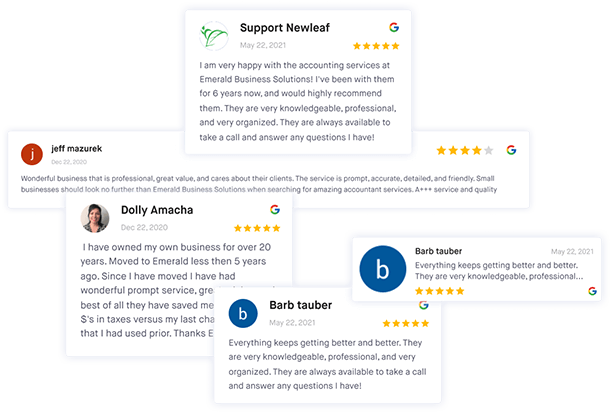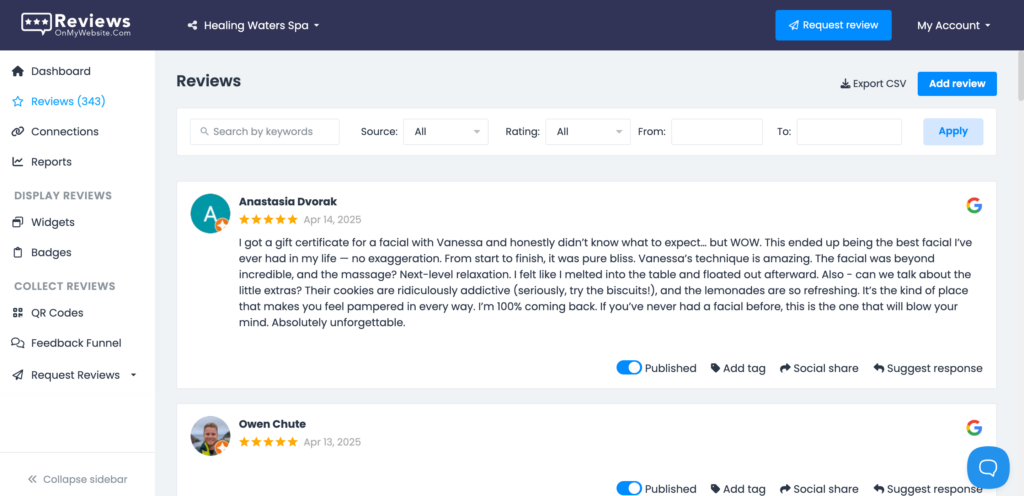If your business has multiple locations, you’ve probably noticed that one branch tends to dominate search results while others barely appear. That’s a common problem, and one that multi-location SEO is designed to solve.
Multi-location SEO helps every store, office, or service area show up when people nearby search on Google or Maps. Whether you manage two branches or 200, visibility in each market drives consistent calls, foot traffic, and sales.
A strong multi-location SEO strategy focuses on doing the basics right: organizing your website clearly, keeping business details accurate, earning reviews, and refreshing local pages regularly. You don’t need advanced tools or technical know-how, just consistency and the right structure.
Let’s break down the steps you can take to help every branch rank locally and attract more customers.
Organize Your Website So Customers Find the Right Location
Customers should never have to guess which branch serves their area. When someone searches “plumber in Denver,” Google tries to match them with the most relevant page. If
your website only has one “Contact” page for all branches, you’re making it harder for both users and Google to find the right one.
Here’s how to fix that:
- Create a main “Locations” page: This page acts as a central directory that lists all your branches by city or region. It helps both customers and Google quickly understand where your business operates.
- Give each branch its own page: Add the branch’s full address, phone number, and business hours. Then link each page back to your main Locations hub to make navigation simple.
- Use clear navigation: Add a “Find a Location Near You” link in your site’s main menu or footer. This ensures visitors can access your locations from anywhere on your website.
- Include a map: Embed a Google Map that shows all your branches or a single map for each location page. Maps make it easier for customers to get directions and verify your location before visiting.
Think of each location page as its own mini website. When every branch has a unique, easy-to-find page, Google understands your structure and can serve the right one to local searchers.
What Every Location Page Should Include
A well-built location page convinces customers they’ve found the right branch and gives Google confidence to rank it.
Each page should include:
- Accurate business details: List the branch’s name, full address, phone number, and business hours on every page. Include a clear “Call” or “Get Directions” button so mobile visitors can reach you quickly.
- Local context: Mention nearby landmarks, neighborhoods, or parking options to help customers recognize your location. These local details make your page feel specific and relevant to people in the area.
- Authentic visuals: Add real photos of your storefront, staff, and interior to show what customers can expect. Genuine images build trust and perform much better than stock photography.
- Customer feedback: Highlight a few recent positive reviews or testimonials from satisfied customers. According to the State of Online Reviews Report, 92.5% of buyers read an online review before making a purchase.
- Consistent formatting: Keep the same layout and style across all your branch pages. A consistent design makes your site easier to update and helps customers recognize your brand wherever they land.
When visitors land on a location page, they should instantly recognize that this branch is nearby, trustworthy, and ready to help.
Set Up and Optimize Your Google Business Profiles
Every branch you operate should have its own verified Google Business Profile (GBP). This free listing is what powers your appearance in Google Maps and the Local Pack (the top three map results).
To optimize each profile:
- Claim and verify each branch: Set up a separate Google Business Profile for every location you operate. Google may send a postcard with a unique code that you’ll need to enter to confirm ownership.
- Complete every field: Fill in your business name, address, phone number, hours, and website URL for each profile. The more complete your listing is, the more likely Google will show it in local searches.
- Add photos: Upload clear images of your storefront, interior, and team members so customers recognize your business when they arrive. Regularly updating photos also shows Google that your profile is active.
- Post regular updates: Share short posts about new offers, community events, or seasonal hours to keep your profile current. Frequent updates signal to customers and search engines that your business is engaged and trustworthy.
When every branch has an accurate and active Google profile, you increase your visibility across Maps and local searches. Businesses that keep profiles updated often see consistent growth in calls and directions over time.

Manage reviews for all your locations with ReviewsOnMyWebsite
Get more 5-star reviews and take control of your online reputation with ReviewsOnMyWebsite.
Keep Your Business Information Consistent Everywhere
Search engines cross-check your business details across dozens of platforms, not just Google. If your name, address, or phone number (NAP) doesn’t match everywhere, it can confuse both customers and search algorithms.
Consistency tells Google that each branch is legitimate and helps customers reach you without frustration.
Audit Your Listings
Start by reviewing your presence on the main directories where customers search for local businesses. These include Google, Facebook, Yelp, and Apple Maps, as well as any industry-specific platforms.
Check each one for accurate business names, phone numbers, and hours of operation. If you find old information, take note and plan to update it immediately. A full audit only takes an hour or two but can prevent months of lost visibility.
Fix Discrepancies Quickly
Whenever a branch moves or changes hours, update every platform right away. Delays can lead to bad directions, missed calls, or frustrated customers showing up when you’re closed.
Make a short checklist of the main sites to update so nothing gets overlooked. Assign one person or manager to handle these updates company-wide. The faster you fix inconsistencies, the more reliable your brand appears online.
Use the Same Format Everywhere
Search engines read small differences in spelling or punctuation as separate entries, which can weaken your local ranking. Always write your address and phone number the same way on every platform.
For instance, if you use “Street” in one place, don’t shorten it to “St.” elsewhere. Keep punctuation, capitalization, and formatting identical from site to site. These details seem minor but create a major signal of consistency.
Check Quarterly
Set a recurring reminder every three months to confirm that your information is still accurate. This is especially important if your business has frequent staff or schedule changes. A quick review helps you catch issues before they spread across multiple platforms.
Many businesses overlook this step, but it’s what separates organized brands from those constantly playing catch-up.
Consistent business information builds trust with both customers and search engines. When your details align everywhere, Google gains confidence in your locations and is more likely to display them in local results.
For customers, that consistency means fewer wrong turns, fewer missed calls, and a smoother path to choosing your business.
Get More Reviews and Respond to Every One
Reviews are among the most powerful local ranking factors, and they strongly influence buying decisions. In fact, more than 78% of consumers won’t consider a business rated below four stars.
To build a steady stream of reviews:
Ask Consistently
The best time to request a review is right after a positive interaction, while the experience is fresh. Train staff to ask politely in person and explain how much feedback helps local customers discover your business.
Small reminders after service or checkout can quickly add up to dozens of new reviews each month. When customers see you actively collecting feedback, it signals professionalism and transparency. Consistent asking also helps balance out occasional negative reviews over time.
Follow Up With a Reminder
Many satisfied customers simply forget to leave a review, even if they intend to. Sending a short, friendly follow-up message or email makes it easier for them to take action.
Include a direct link to your Google review page so there’s no confusion about where to go. This small step dramatically increases response rates, especially when the follow-up arrives within a day or two of the visit. Keep the message personal and appreciative rather than transactional.
Pro tip: You can use ReviewsOnMyWebsite to set up automated email and SMS review requests that ensure every customer gets asked to leave a review.
Make It Simple to Leave Feedback
The easier the process, the more likely people are to complete it. Provide clear instructions and one-click links to the right platform. Avoid sending customers through multiple steps or logins, which often discourage participation.
You can even print QR codes on receipts or signage in-store to make the process effortless. A smooth experience encourages more feedback and demonstrates attention to detail.
Reply Promptly and Professionally
Responding to every review shows that you care about customer satisfaction. Thank positive reviewers with a brief, personal note, and address complaints respectfully without defensiveness.
Nearly 80% of consumers say a thoughtful reply makes them more likely to trust a business, so your response matters as much as the review itself. Keep your tone calm, factual, and polite, even for negative comments.
Each public reply becomes an opportunity to show how your business handles feedback.
Pro tip: Use ReviewsOnMyWebsite to monitor and respond to all the reviews your business gets from one central location. Take advantage of the AI-powered response feature to craft personalized replies in seconds.

Monitor Reviews Regularly
Assign someone at each branch to check reviews at least once a week so new comments never go unnoticed. Consistent monitoring helps you spot recurring issues or celebrate staff who receive praise.
It also allows you to catch fake or inappropriate reviews quickly before they harm your rating. Building a review routine keeps your reputation current and prevents small problems from snowballing.
Over time, an active and responsive profile becomes one of your strongest marketing assets.
Good reviews are social proof that your business delivers what it promises. Thoughtful, consistent responses show that you listen to customers and value their experiences.

Manage reviews for all your locations with ReviewsOnMyWebsite
Get more 5-star reviews and take control of your online reputation with ReviewsOnMyWebsite.
Create Local Content That Builds Trust
Showing involvement in your community turns your business from a faceless brand into a familiar neighbor. Local content gives people (and Google) more reasons to associate each branch with its city.
Ways to do this include:
- Highlight local events: Post about community festivals, fundraisers, or local causes that your team supports. These updates show customers that your business is involved in the area and cares about more than just sales.
- Answer city-specific questions: Write short FAQs that address local topics such as parking rules, delivery zones, or local service areas. This makes your content more helpful and helps Google match your pages with local searches.
- Feature team members: Share short bios or staff spotlights to put a face to each branch. Highlighting your employees makes your business feel more approachable and builds trust with the community.
- Add seasonal updates: Post about weather-related services, limited-time offers, or holiday hours. Frequent updates keep your website fresh and show customers that your business is active year-round.
Even a few location-specific posts per quarter can strengthen visibility. These small updates help each page feel active and relevant to local searchers.
Build Local Links and Community Connections
Links from other reputable local websites act like endorsements. They tell Google that your branch matters in that area. Earning them doesn’t require big PR campaigns; it just takes genuine local participation.
Here’s how:
- Join local business groups: Sign up for your city’s Chamber of Commerce or other professional associations. Many of these organizations include member listings with links to your website, which can boost both visibility and credibility.
- Sponsor community activities: Support local events, schools, or charities that align with your brand values. Most organizers thank sponsors publicly online, giving you both a backlink and positive local exposure.
- Collaborate with neighbors: Partner with nearby businesses for joint promotions, giveaways, or referral programs. These collaborations strengthen relationships in your community and help each partner reach new audiences.
- Engage the media: Reach out to local newspapers, radio stations, or blogs when you open a new branch or participate in a cause. Local coverage creates valuable awareness and often includes links back to your website.
These connections not only improve SEO but also create valuable offline awareness and goodwill within your community.
Keep Every Branch Growing with Quarterly Tune-Ups
Local SEO isn’t something you set up once and forget. Just like your storefront needs regular cleaning and upkeep, your online presence requires ongoing care. A quarterly review keeps your locations accurate, active, and easy to find.
Confirm Your Business Details
Start each quarter by reviewing every branch’s key details: address, phone number, business hours, and website links. Even small errors, like a missing digit in a phone number, can cause customers to call the wrong location.
Double-check that hours reflect holidays or seasonal changes, and make updates across all listings immediately. Consistent, up-to-date information shows reliability and helps customers trust your brand.
Refresh Photos and Visuals
New photos signal that your business is active and welcoming. Upload recent images of your storefront, signage, or team to each Google Business Profile and location page. Replace outdated images, such as seasonal decorations or past employees.
Fresh visuals not only attract attention but also encourage customers to visit in person. They also help Google see that your profiles are maintained and relevant.
Encourage New Reviews
Positive reviews lose some impact as they age, so make review generation a year-round effort. Set realistic monthly goals for each branch, like collecting five new reviews every 30 days. Remind staff to ask satisfied customers to share feedback while the experience is still fresh.
Responding quickly to those reviews helps maintain engagement and builds stronger relationships. A steady flow of new feedback tells search engines your business is active and trustworthy.
Review and Update Your Content
Outdated offers or old event information can make your pages look neglected. Review each location page for expired promotions, broken links, or outdated copy. Refresh text and visuals to reflect what’s happening now, including new products, staff changes, or hours.
Regular updates keep your website aligned with what customers see in person. This small step improves both search performance and user experience.
Maintain Consistency Across Locations
As your business grows, maintaining consistent branding becomes more important. Check that each branch uses the same tone, logo, and color scheme across their web pages and social media.
A unified look reinforces brand recognition and makes your company feel cohesive. When every branch presents the same trustworthy image, customers feel confident that the experience will be similar wherever they go.
Routine updates like these prevent small issues from turning into major visibility problems. According to the State of Small Business Marketing Report, 35% of businesses update their websites monthly, and those that do often maintain stronger visibility throughout the year. Small, consistent actions are the key to long-term local SEO success.

Manage reviews for all your locations with ReviewsOnMyWebsite
Get more 5-star reviews and take control of your online reputation with ReviewsOnMyWebsite.
Frequently Asked Questions
What Is Multi-Location SEO?
Multi-location SEO is the process of helping every branch of your business appear in local Google searches and Maps. It involves creating separate pages for each location, verifying Google Business Profiles, and keeping your details accurate everywhere customers might find you.
How Does Local SEO Help Multi-Location Businesses?
Local SEO ensures people searching in a specific city or neighborhood find the right branch. By optimizing your website and listings for each area, you capture more local customers, reduce confusion, and grow brand visibility in every market you serve.
How Do I Get Started with Multi-Location SEO?
Start small. Build a “Locations” hub and individual branch pages with complete contact details.
Then verify your Google Business Profiles, ensure consistent information across all directories, and begin collecting customer reviews. Within a few months, you’ll see increased traffic and calls from local searches.
What If I Don’t Have Time to Manage Each Location Online?
Delegate or schedule maintenance. Assign one staff member per branch to monitor reviews and listings weekly, or set a quarterly checklist for updates. Consistency matters more than perfection, and small efforts compound over time and protect your visibility.
Keep Your Business Easy To Find In Every City
Multi-location SEO isn’t complicated: it’s consistent, repeatable effort. When every branch has its own page, accurate details, and strong reviews, customers find you faster and trust you more.
Set aside time each quarter to refresh your online presence, just like you would tidy up your physical storefront. That steady attention keeps your business visible, credible, and ready to serve customers wherever they search.




